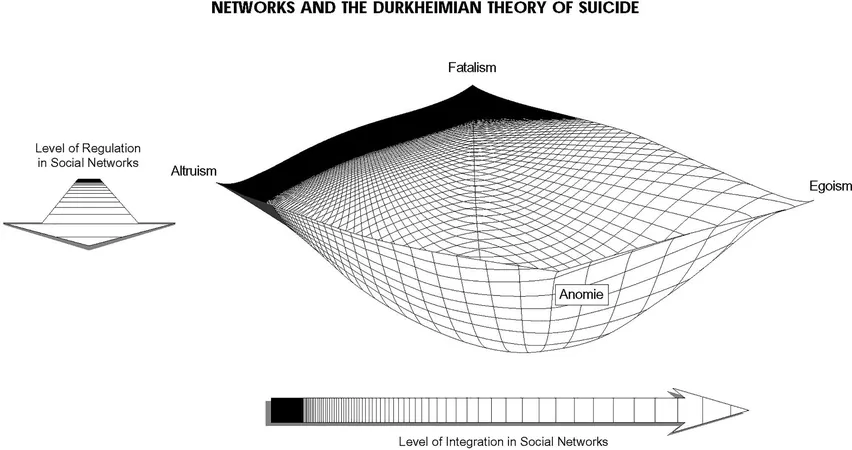
Transforming Mental Health: How Collaborative Networks Can Tackle Suicide and Other Health Crises
2024-11-25
Author: Wei
As the alarming rates of suicide and chronic illnesses continue to burden healthcare systems, groundbreaking research from Indiana University unveils a promising solution rooted in the interconnectedness of human health. Led by Bernice Pescosolido, a Distinguished Professor of Sociology, this research introduces the Network Embedded Symbiome (NES) framework, which highlights the crucial role of collaborative networks—such as family, friends, and community—in shaping health outcomes.
Pescosolido, the founding director of IU’s Irsay Institute for Sociomedical Sciences, argues that understanding health transcends examining genetics and lifestyle alone; it requires a comprehensive look at interactions among various social networks. This paradigm shift could revolutionize how researchers and policymakers address diseases and formulate interventions.
The Power of Networks
At the core of Pescosolido’s framework lies well-established research on social determinants of health, which identifies socioeconomic status and social relationships as influential factors in human well-being. The NES model adds depth by examining how the configuration of one’s social network—both supportive and detrimental—affects health outcomes.
For instance, a community fortified by strong social bonds can serve as a protective barrier against stress, significantly lowering suicide rates. Conversely, individuals isolated from supportive networks are more susceptible to adverse health effects.
When applied to suicide prevention, the NES framework presents a compelling case. Historical data linking social ties to mental health reveal that individuals integrated within supportive networks exhibit greater resilience against suicidal thoughts. In contrast, individuals burdened by toxic relationships may face an elevated risk.
Recent studies underscore this approach's efficacy, showing that enhancing individuals' social connections can dramatically reduce suicide risk without negatively impacting their mental health. The NES model advocates for suicide prevention tactics that prioritize fostering social bonds and reducing isolation at multiple levels, resonating with recommendations from the Centers for Disease Control and Prevention.
Expanding the Horizons of Health Approaches
Pescosolido’s insights extend beyond mental health into the realms of chronic illnesses and infectious diseases, demonstrating how social networks can either accelerate or impede health outcomes. For example, during the COVID-19 pandemic, communities with strong social networks managed to mitigate mental health crises more effectively than those without, despite widespread isolation.
In a particularly revealing study, Pescosolido collaborated with colleagues to examine school environments following a series of suicides. The findings highlighted that while strong interconnectedness among students is vital, external pressures from school structures and expectations can significantly affect students' mental health.
Emphasizing practical implementation, Pescosolido acknowledges that integrating community network data into mainstream health research poses challenges. However, she firmly believes that the potential benefits could be transformative.
A Paradigm Shift in Health Research and Policy
As the NES model gains recognition, it could redefine the approach health professionals take in tackling complicated health challenges. By promoting more connected communities, this innovative framework not only provides a scientific approach but also caters to a fundamental human requirement—the need for connection.
In a climate where mental health crises loom large, the NES model offers a beacon of hope for future interventions, positioning community and collaboration at the forefront of health strategies. The need for a paradigm shift in focusing on social networks could very well be the key to unlocking improved health outcomes and saving lives.
 Brasil (PT)
Brasil (PT)
 Canada (EN)
Canada (EN)
 Chile (ES)
Chile (ES)
 España (ES)
España (ES)
 France (FR)
France (FR)
 Hong Kong (EN)
Hong Kong (EN)
 Italia (IT)
Italia (IT)
 日本 (JA)
日本 (JA)
 Magyarország (HU)
Magyarország (HU)
 Norge (NO)
Norge (NO)
 Polska (PL)
Polska (PL)
 Schweiz (DE)
Schweiz (DE)
 Singapore (EN)
Singapore (EN)
 Sverige (SV)
Sverige (SV)
 Suomi (FI)
Suomi (FI)
 Türkiye (TR)
Türkiye (TR)